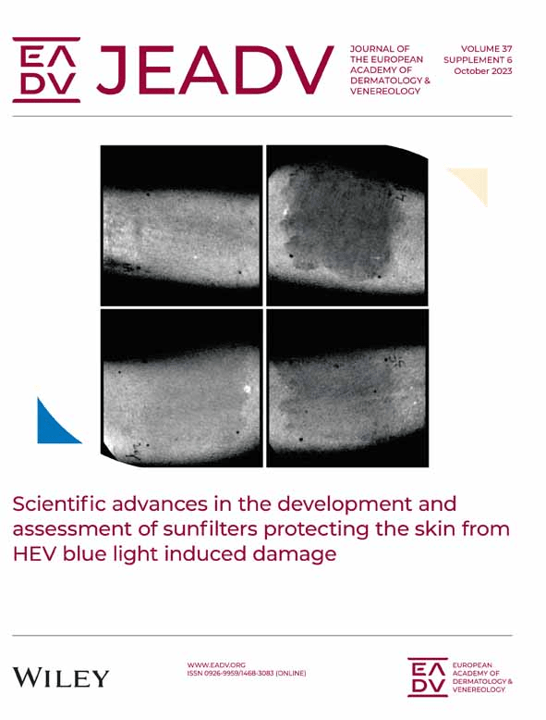
Protection from skin damage caused by high-energy visible light (HEV), also known as blue light

December 21, 2023
What is blue light?
Blue light is located at the edge of invisible ultraviolet (UV) light spectrum. Light with wavelengths in this part of the high-energy spectrum (400–450 nm) is also called high-energy visible (HEV) light.
What are the effects of HEV light on the skin?
In recent years, several studies have shown that skin damage caused by the sun is not only due to UV radiation. Visible light is more abundant and penetrates deeper into the skin layers than UV radiation. The damaging effects of visible light contribute to premature photoaging of the skin, lead to hyperpigmentation, and play a role in carcinogenesis.
Despite increasing exposure to artificial blue light sources (light-emitting diodes (LEDs), smartphone screens, computer screens, etc.), 95% to 99% of the harmful effects of blue light on the skin are due to the sun. It is therefore necessary to protect the skin from the whole spectrum of solar radiation.
Development and evaluation of sunscreens that protect the skin from HEV light-induced damage
TriAsorB™ (phenylene bis-diphenyltriazine) is a new organic sunscreen, which has been developed by Pierre Fabre Laboratories to provide ultra-broad-spectrum sun protection, including against UVB, UVA, (short and long) and HEV light (400-450 nm).
A supplement dedicated to scientific advances in the development and evaluation of sun filters that protect the skin from HEV blue light-induced damage was recently published in the Journal of the European Academy of Dermatology and Venereology (JEADV). It includes:
- A foreword introducing the topic through a literature review
- Two original articles:
- an article presenting a simple, noninvasive, method based on multispectral image analysis to evaluate the performance of sunscreens in humans (Le Digabel et al., 2023)
- an article reporting the results of in vitro evaluations ofthe photostability and photoprotection properties of nine sunscreens containing the TriAsorB™ filter, together with three other organic UV filters, as well as the effect of two of these sunscreens on blue light-induced skin pigmentation in humans (Boyer et al., 2023).
Santé Active Edition – Synergy Pharm’s expertise in medical writing
The three articles included in this supplement were drafted in parallel by the medical and scientific editorial team of Santé Active Edition – Synergy Pharm. Our editorial assistance service provides A to Z support to our clients for the publication of their results or literature reviews in peer-reviewed journals, including managing the submission, preparing all of the required documents (e.g., cover letters and declarations of conflicts of interest), interactions with the journal editor if necessary, responses to reviewers, and scientific coordination.
If you want to promote your research results through a scientific publication, perform a literature review, or report proceedings from a medical or scientific congress, do not hesitate to contact us to discuss your projects! The areas of expertise of our medical and scientific writing agency are rich and varied.